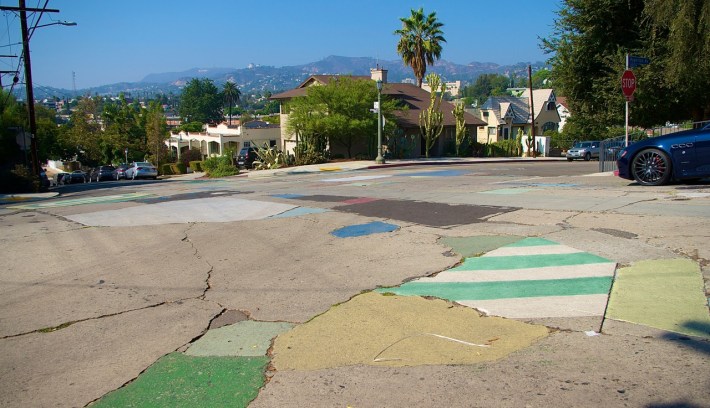
Last month, I sent a photo illustrating some of the new designs that had popped up at Effie and Hyperion in Silver Lake (above) to Joe and Damien.
Joe, without disclosing the location, posted it to Streetsblog with a brief accompanying explanation.
As he noted, the intersection has seen various DIY interventions. The painting of the chunks of cement -- which has been going on for years now -- seems to have been part of an effort by the neighbors to get people to slow down on the side streets. Cars have had a tendency to fly up and down Hyperion, which serves as a sort of back-door connector between Sunset Blvd. and Fountain Ave (where it turns into Hyperion) and faster than the adjacent Griffith Park Bl., which has stop signs every few blocks.
Other interventions I've seen have included bollards at the stop signs with fun signage (below).
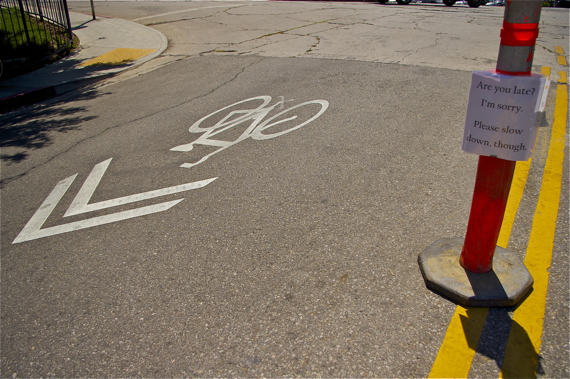
Ever efficient when it sniffs out fun and safety-enhancing DIY interventions, the city repainted the intersection in soul-killing shades of gray some time last week (below).
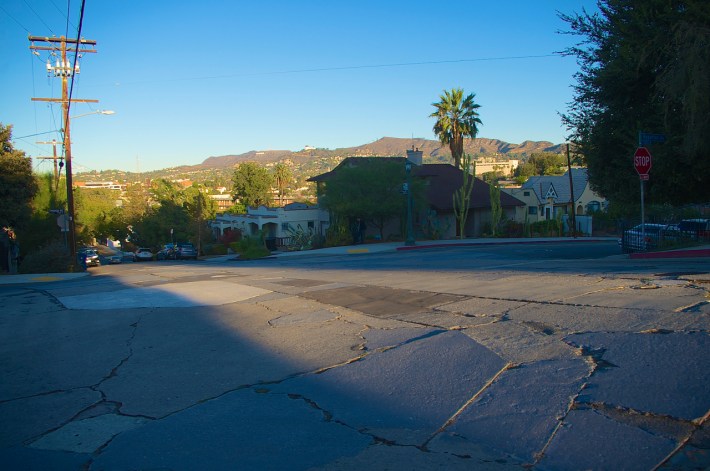
I find this turn of events disturbing for a few reasons.
For one, the paint was apparently deemed so troubling it could not stand, but the deep cracks and uneven pavement, which constitute genuine safety hazards for cyclists, skateboarders, and pedestrians (particularly those pushing children in strollers or using wheelchairs) trying to navigate the awkwardly sloped hill and its poorly marked pedestrian crossings and stops, are not a problem.
Second, the colorful paint -- again, meant as a fun way to enhance safety and located a quarter of a mile from the blindingly green Sunset Triangle Plaza -- was somehow more threatening than the gang signs painted in the middle of the intersection at 23rd and Trinity that I wrote about last year.
What's that you say?
Allow me to explain.
South Central Primera Flats 23rd Street painted both "23" and their gang sign in the middle of the intersection at 23rd and Trinity several years ago (below).

But as these photos show, as of this morning, they have yet to be painted over.
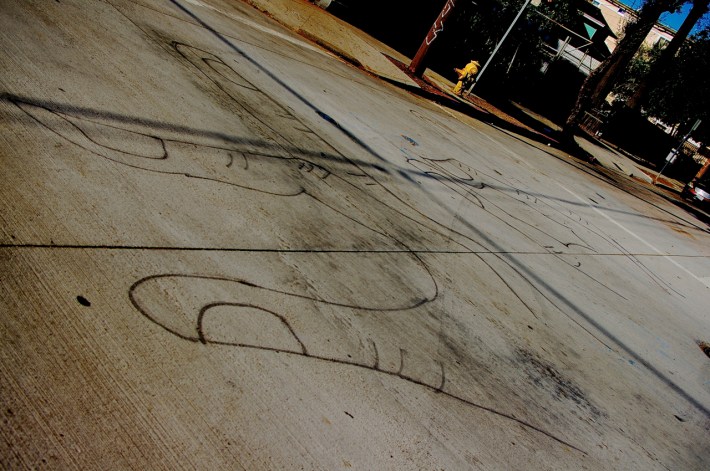
These are harder to see than colorful paint splotches, to be sure. But these guys are pretty diligent, and they've covered lots of surfaces, just to make sure you know who controls the area (see the hand signs from above thrown here).

In case you're not looking down, they put some stuff at eye level, too.
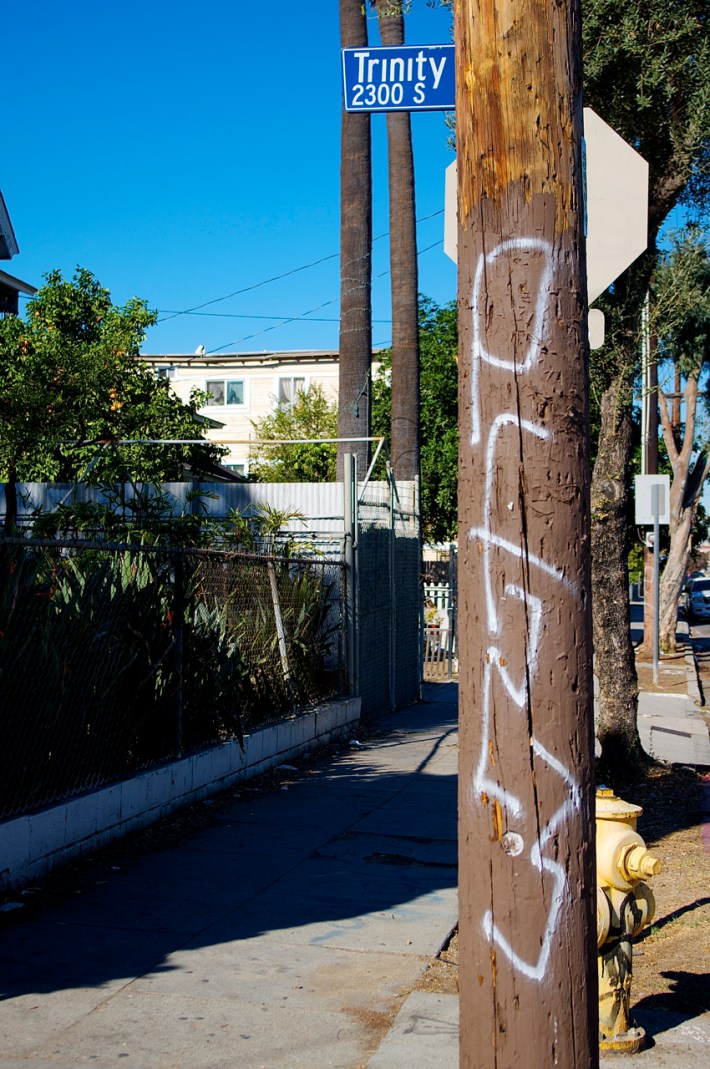
And on nearby walls and gates for good measure.
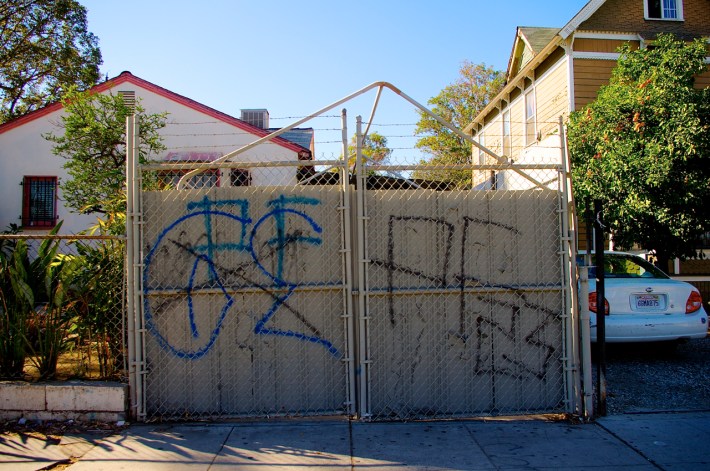
These tags are all found at the intersection.
But there's many more on walls of some of the industrial buildings, businesses, and in the alleys around the area. They mark the telephone poles and curb cuts around Trinity Park, as well, making clear who is welcome at the park and who is not.
I'm not against youth of a community banding together and finding a way to beautify their streets in a way that reflects their neighborhood and culture. But I'm pretty sure that most people would agree that gang signs and tags don't really fit into that category.
In fact, most people, particularly those that live in neighborhoods where gang activity really impacts their ability to move through the public space, would probably argue that there is an inverse relationship between the extent to which a community is so blatantly and enduringly marked up and the amount of attention and resources it has gotten from the city.
I'm just sayin'.
So, rest easy, good people of Silver Lake. Your miserable intersection is safe from the Department of DIY. I wish I could say the same for the good people of Historic South Central.






